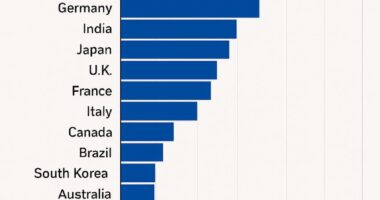Table of Contents
- Understanding Credit Card Debt
- Assessing Your Financial Situation
- Creating a Budget That Works
- Choosing the Right Debt Repayment Strategy
- Negotiate Lower Interest Rates
- Consider Debt Consolidation
- Increase Your Income Streams
- Stay Motivated Through the Journey
- Common Mistakes to Avoid
- Conclusion: Your Path to Financial Freedom
Understanding Credit Card Debt
Credit card debt is a pervasive issue, particularly among millennials and young professionals. Statistics indicate that a significant percentage of individuals in this demographic carry balances on their credit cards. Understanding what leads to credit card debt helps you address the root causes. High-interest rates, impulse spending, and lack of budgeting can all contribute to increasing debt levels. By acknowledging these factors, you can take actionable steps towards financial freedom.
Assessing Your Financial Situation
Before diving into strategies for repayment, take a moment to assess your current financial situation. Start by gathering all your credit card statements and making a list of your debts. Include the following details:
- Total Balance
- Minimum Monthly Payment
- Interest Rate
This comprehensive overview will not only give you clarity on your debts but also set the stage for creating a targeted strategy to eliminate them. Don’t forget to account for your income, essential expenses (like rent, utilities, and groceries), and discretionary spending to understand where your money is going.
Creating a Budget That Works
A well-structured budget is vital for slashing your credit card debt. Begin by categorizing your spending into fixed, variable, and discretionary expenses. Use the following guidelines:
- Track Your Spending: For at least a month, note all your purchases.
- Define Budget Categories: Create categories that reflect your spending habits. Consider categories for entertainment, dining out, shopping, and savings.
- Set Limits: Assign reasonable limits to each category, ensuring you’re prioritizing debt repayment.
- Review and Adjust: Monthly calorie and expenditures can fluctuate. Regularly review and adjust your budget to remain aligned with your goals.
By being disciplined about your budget, you’ll free up more money to put towards your credit card debt.
Choosing the Right Debt Repayment Strategy
There are several effective debt repayment strategies to help you escape the burden of credit card debt more quickly. The two most popular methods are:
Debt Snowball Method
This approach emphasizes paying off your smallest debts first. Make minimum payments on all your accounts except the smallest one, which you will target with surplus funds. Once you pay off the smallest debt, move on to the next smallest, gaining momentum as you progress.
Debt Avalanche Method
The debt avalanche method prioritizes debts with the highest interest rates. By tackling the most expensive debt first, you minimize the total interest you pay over time. Make minimum payments on all your other debts while focusing on the one with the highest interest.
Both methods have their merits, and choosing the right one depends on your personal preferences and motivation. If you need quick wins to stay motivated, the snowball method may be best. If you prefer mathematical efficiency and saving on interest, the avalanche method will serve you well.
Negotiate Lower Interest Rates
Many card issuers are willing to negotiate on interest rates, especially if you have been a good customer. Contact your credit card company and express your desire for a lower rate due to your history or loyalty. Prepare for the call by:
- Knowing your payment history
- Being aware of competitor rates
- Highlighting your evidence of financial responsibility
Success in negotiation can significantly reduce the amount of interest you pay over time, allowing more of your payment to go toward reducing the principal balance.
Consider Debt Consolidation
Debt consolidation is another viable option for those struggling with multiple credit card accounts. This strategy involves combining your debts into a single loan with a lower interest rate. Effective ways to consolidate include:
- Balance Transfer Credit Cards: Many cards offer zero or low-interest rates for an introductory period, allowing you to transfer the balance from high-interest cards.
- Personal Loans: Securing a personal loan from a bank or credit union can also provide a strategic way to consolidate debts.
While consolidation can simplify your payments and lower interest, it’s important to ensure that you’re not inadvertently accumulating more debt during the process.
Increase Your Income Streams
Boosting your income can accelerate your debt repayment journey. Consider the following options:
- Side Hustles: Explore freelance work, consulting, or investing in skills that can help you earn more.
- Overtime or Additional Shifts: If applicable, take on extra work hours at your current job.
- Sell Unwanted Items: Declutter your space and sell items you no longer need.
Every little bit helps, and using extra income to make larger payments towards your credit card debts can reduce your overall repayment time significantly.
Stay Motivated Through the Journey
Dealing with debt can be a strenuous journey, and it’s essential to remain positive. Here are some tips to help you maintain motivation:
- Set Achievable Goals: Break your repayment process into smaller milestones.
- Celebrate Milestones: Reward yourself (within reason) as you achieve each goal.
- Visualize Success: Keep a visual representation of your debt reduction, such as a chart.
- Engage a Support Network: Share your goals with friends or family, who can motivate you on tough days.
By incorporating these strategies, you can maintain a positive mindset and stay focused on your financial journey.
Common Mistakes to Avoid
While working on eliminating credit card debt, it’s essential to avoid common pitfalls. Here are a few to watch out for:
- Ignoring the Problem: Facing your debt is crucial. Ignoring it only allows it to worsen over time.
- Only Making Minimum Payments: This can lead to a prolonged repayment period and increased total interest paid.
- Accumulating More Debt: Avoid taking on new debt while trying to pay off existing balances. This can set you back significantly.
- Failing to Reevaluate Your Budget: Life circumstances change. Regularly revisiting your budget is critical in adapting to shifts in your financial situation.
Being aware of these mistakes can help you stay vigilant and maintain control over your financial decisions.
Conclusion: Your Path to Financial Freedom
Taking control of your credit card debt doesn’t have to be a monumental task. By assessing your financial situation, creating a structured budget, and employing effective repayment strategies, you can find yourself on the path to financial freedom sooner than you think. Remember, every step you take—no matter how small—moves you closer to a debt-free existence and a more secure financial future. With determination, discipline, and a well-laid plan, you will necessarily achieve your goals and reclaim your peace of mind.









